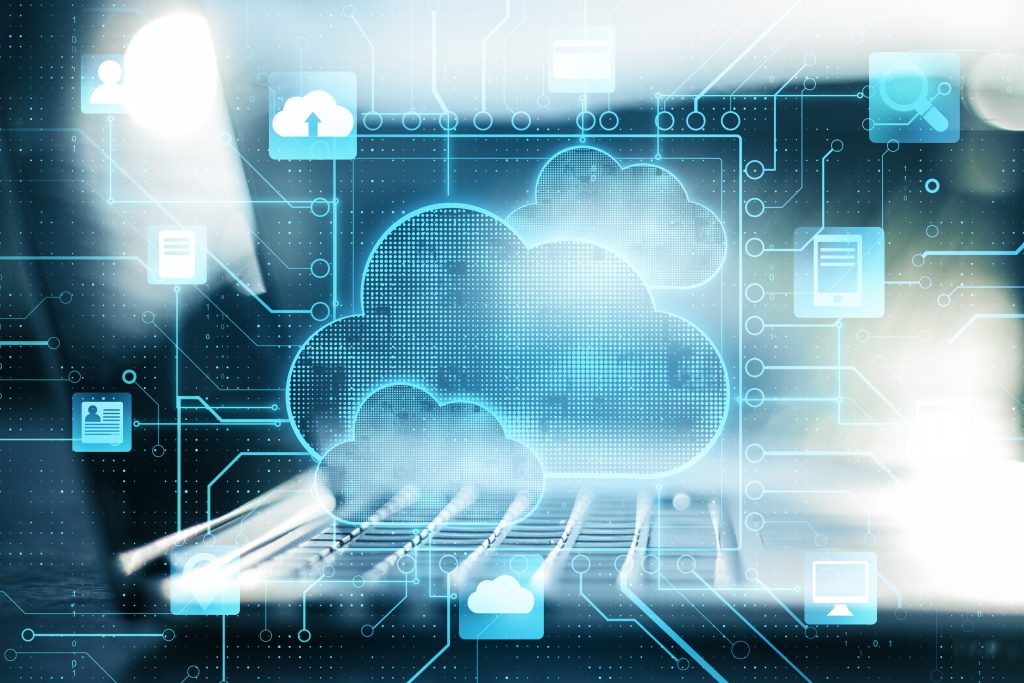 Computer users need to access processing resources that aren’t available on their local machines. Virtual computing solves this problem. It does it by connecting client machines to a host machine over a remote network. College students seeking degrees in computer science or informational technology should be familiar with the advantages and disadvantages of using a virtual machine. This article discusses what virtual machines are and how they work. We also discuss what to expect from virtual computing in the future. But first, let’s answer an important question.
Computer users need to access processing resources that aren’t available on their local machines. Virtual computing solves this problem. It does it by connecting client machines to a host machine over a remote network. College students seeking degrees in computer science or informational technology should be familiar with the advantages and disadvantages of using a virtual machine. This article discusses what virtual machines are and how they work. We also discuss what to expect from virtual computing in the future. But first, let’s answer an important question.
What Is Virtual Computing?
In the tech world, it’s common to see networks set up with access to virtual computers. Virtual computing makes one computer perform like many computers. You do this through a virtual computing provider. Virtual computing allows remote access to software processes and applications. This is an important tool for the growing number of employees working from home. Users get access to what they need via the Internet through a network or wireless server. From there, users can leverage their computer’s size, performance, and processes whenever needed. This real-time technology offers many different benefits. These include:
- Automated problem solving
- Data backup on an operating system
- Learning resources
- Management tools
- Memory
- Operating system storage
- Troubleshooting capabilities
How Does Virtual Computing Work?
Virtual computers give you access to applications and software for a single physical computer or an entire network. You can get what you need when you need it. Because all apps run remotely, the virtual environment is a huge benefit to you and your computer needs. But to do this, you need a virtual computer provider.
Virtual Computing Providers
The number of virtual providers has grown in recent years. Today, there are many dedicated companies offering this service. The most well-known include:
Hewlett-Packard
The virtual machine offerings from HP give users access to many benefits. One such benefit is its management of electronic systems. HP offers an allocation of storage as needed. This is important in tracking and managing online and offline storage. The virtual client computing from HP also includes:
IBM
IBM is a large company that offers virtual machine operations and configuration. Its virtual tools include:
- Performance
- Storage
- System security
Each of the management tools that IBM offers includes diagnoses and repairs, protection, and security. IBM is a household name in virtual machines.
Microsoft
Microsoft provides hardware and software storage solutions through its Windows Operating System. Since it offers a virtual computer system, you don’t need large mainframe configurations or different operating systems. You get access to management, monitoring, and upgrades in a virtual space.
Sun Management
Sun installs, operations, and configures applications without interrupting an operating system. It allows its users to convert back to a previous configuration. And it does this all using multiple virtual machines with an operating system built around virtualization. Most virtual machines providers offer similar services, but guest operating system specifications vary. Some operating systems demand specific tools. To understand what tools and services virtual computing providers offer, contact the company for details. 
Virtual Computing Technology Pros and Cons
Now that you’ve answered the question what is virtual computing? it’s a good idea to examine its pros and cons. There are advantages and disadvantages of virtual machines. Let’s take a look at some of the pros and cons of both.
Advantages of Virtual Computing
The main advantage of virtual machine use is remote access. What is remote access? It is when an authorized user accesses a computer or operating system network remotely. This type of access opens up many different possibilities in IT. Other advantages of virtual machines include:
- Data backup
- Greater choice of software applications
- Increased storage space
- Performance monitoring
- Troubleshooting and improvements
With this type of access, users receive benefits that they don’t get with a physical machine that lacks virtual computing. With an online virtual machine, there are many advantages. This is true if you’re a college student or employee. Here’s a deeper look at the advantages users get with virtual computing.
- Employees can work remotely from home, cafés, or other spaces
- Managers can monitor data remotely
- Students get access to online courses, materials, and other resources
- Users don’t need a physical computer to access documents
- Users get access to email and can check it on the go
When you allocate resources on physical machines or a physical server to a virtual environment, you make the system available to multiple users. And you don’t need to be in the area to obtain access. Your computing resources are available remotely. This type of computing also improves the speed and performance of users and IT operations. Resource sharing is quick and efficient. Virtual computing eliminates the need for different operating systems or using the same physical computer.
Disadvantages of Virtual Computing
While this type of computing gives users access and availability, it does have its downfalls. One disadvantage of virtual computing is the cost. Virtual computing providers aren’t cheap. Having a virtual provider doesn’t mean you can get rid of your IT staff. You need trained personnel to act as a liaison with virtual computing providers. Another disadvantage is time. While virtual computing does allow users to run applications remotely, it is time consuming for IT staff. In many cases, you will pay your employees overtime to troubleshoot issues and handle problems that come up outside of work hours. Remember, your remote users can work at all hours of the day or night.
What is a Virtual Computer?
You can group virtual computers into two main categories:
- Remote computers
- Virtual machines
A virtual machine is the more familiar type of virtual computer. It shares the local resources available to it through the host computer. Virtual machine software, such as VirtualBox and Parallels, creates a sandbox within a host operating system installed onto the hardware of a desktop or laptop computer. The host machine shares memory, processing power, and disk space with the virtual machine in the sandbox. A remote machine is a different type of virtual computer. It’s a powerful workstation or network of workstations you can access over a network from a client machine. Remote computing works in the same way that cloud computing works, except that remote machines are not always available on public networks. But you do find them in professional spaces where many team members must work together on a project. 
Can a Virtual Machine Infect the Host Computer?
Virtual machines are susceptible to viruses. They are also susceptible to:
- Malware
- Ransomware attacks
Viruses can come from infected virtual machine images. They can also come from users who don’t have proper security training. The physical host machine accessing virus infected data can also be at risk. When a virtual machine gets infected, it can spread malware across the entire environment. It can also infect multiple operating systems, your host physical machine, and other infrastructure. Your host machine is at risk if the virtual machine becomes infected.
Does Virtual Mean It Isn’t Real?
Just because it’s virtual doesn’t make it any less real. When something is virtual, it is more about the environment where the activities take place. In this case, the online environment. It’s less about the activities themselves. So, the answer to this question is no. Let’s look at an example: a virtual trade show or conference. This refers to an event that takes place in a virtual setting. It is not a physical venue. The event lacks a physical form, but that doesn’t make it any less real. It’s still taking place in a virtual space. A virtual classroom is another example. A student gets remote access to learning resources in a virtual space. They participate in live lectures. They interact with their peers. They post messages and watch videos. Students actively learn in a virtual space. It doesn’t have a physical form, but it still exists.
Why Virtualize Your Business?
To virtualize or not virtualize? This is the question at the forefront of many companies and businesses. But businesses that virtualize receive the benefits of what virtual machines can do.
How Virtualization Can Transform Your Business
Here are a few ways virtual machines can transform your business.
Create Scalable Solutions
With virtualization, you can host several virtual machines on the same server. Due the nature of virtualization, you can scale your computer systems and guest operating systems. Cloud computing based virtualization makes this possible.
Flexibility
With software virtualization, your business operations can become more flexible. Servers can run more than one operating system. Since the virtualization software is separate from the hardware (physical device), you can also run many applications at a time. Virtual machines host all kinds of business processes, and each machine has a different operating system and applications. Each virtual machine acts as an independent physical server. This adds to its flexibility.
Optimize Space
When you utilize a virtual machine, you can optimize your physical space. For example, a Microsoft virtual PC can maximize space because it reduces the number of physical servers needed. Microsoft is the hosting provider. They divide a server into many virtual machines. 
Real-World Applications
There are many real-world applications in virtual computing. Whether it’s hardware virtualization or software virtualization, it plays a crucial role today’s (and the future’s) IT architecture. Its real-world applications include:
System virtual machine
A virtual machine is a host operating system or an application environment that displays the same characteristics of dedicated underlying hardware in a virtual space. Types of virtual machines include:
- Java virtual machine
- Process virtual machine
Virtual agent
This automated chatbot or voicebot provides customer service without the need of a real person. You don’t need human intervention to use a virtual agent.
Virtual assistant
This type of program or device understands human language. At least to some extent. It performs jobs based on spoken requirements. Examples of virtual assistants include Amazon’s Alexa and Apple’s Siri.
Virtual memory
Virtual memory allows computer systems or physical machines to to compensate for physical memory shortages. It does this by transferring data to disk storage.
Virtual reality (VR)
VR is a well-known artificial environment. The operating system offers immersive experiences for users. Experiences are realistic, but a user’s physical reality doesn’t change.
Virtual switch
Virtual machines can communicate with each other through a software program known as a virtual switch. The virtual switch operating system can connect physical computers or help one physical computer communicate with virtual machines.
Virtual tape
Virtual tape is storage technology. It’s as industrious as the name sounds. It makes a drive-based storage system look like a tape library.
Virtual world
Virtual world operating systems provide a simulated environment where users can participate in activities through the creation of a personalized avatar. They can communicate with other users via voice or chat.
Related Resources:
- 20 Best Online Bachelor’s in Computer Science
- 30 Best Online IT Degree Programs to Study in College 2023
- 30 Great Small Colleges for STEM Degrees
- Top 20 Degrees for the Future
- Ultimate Guide to Computer Science Degrees and Careers
